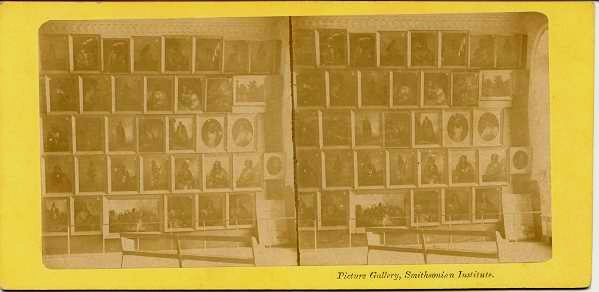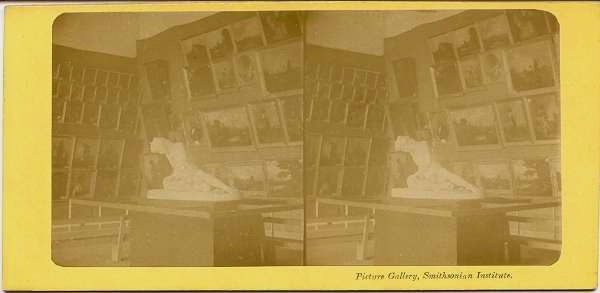Thomas McKenney, United States superintendent of Indian trade in Georgetown, then port of entry for the District of Columbia, conceived the idea of developing a government collection of portraits of prominent Indians who visited Washington. McKenney engaged the services of Charles Bird King (1785-1862), a well known Washington portraitist, who had studied under the great Benjamin West and others, to paint this series of portraits. King painted from life Indian leaders of at least twenty tribes. These portraits were later handsomely reproduced as hand colored lithographs in Thomas McKenney and James Hall’s three-volume classic, History of the Indian Tribes of North America, published in 1837.
McKenney and Hall’s endeavor was an artistic and technological achievement. The first edition, begun in February 1837, was the culmination of eight years of effort. The last volume of this edition appeared in January 1844, some fifteen years after the project began. (Text adapted from the Introduction by John Ewers to The Indian Legacy of Charles Bird King, by Herman Viola, co-published by Smithsonian Press and Doubleday & Company, Inc., 1976.)
Charles Bird King’s Indian Portraits were transferred to the Smithsonian Institution in 1858 when the National Institute was formally disbanded and its collections dispersed. Joseph Henry, the first secretary of the Smithsonian, placed the portraits in the Art Gallery on the second floor of the Smithsonian Building. Also on display in this gallery was the collection of American Indian portraits and scenes by New York artist John Mix Stanley. This combined collection of 291 paintings was considered the largest and most valuable one of its kind. On the afternoon of January 24, 1865 fire consumed the entire gallery (fig.5). Fireproof walls and floors saved the rest of the building from complete destruction but the loss was tragic. A few of the King paintings were carried out of the building during the first few minutes of the fire, however, the rest could not be saved. The original oil portraits by King which served as models for the twenty McKenney & Hall lithographs chosen for this exhibit were among those destroyed in the fire of 1865.


